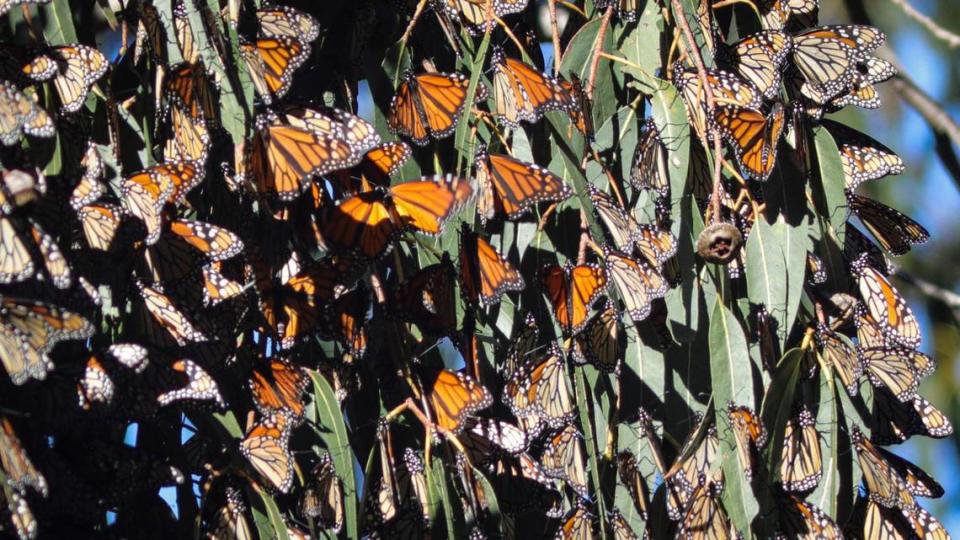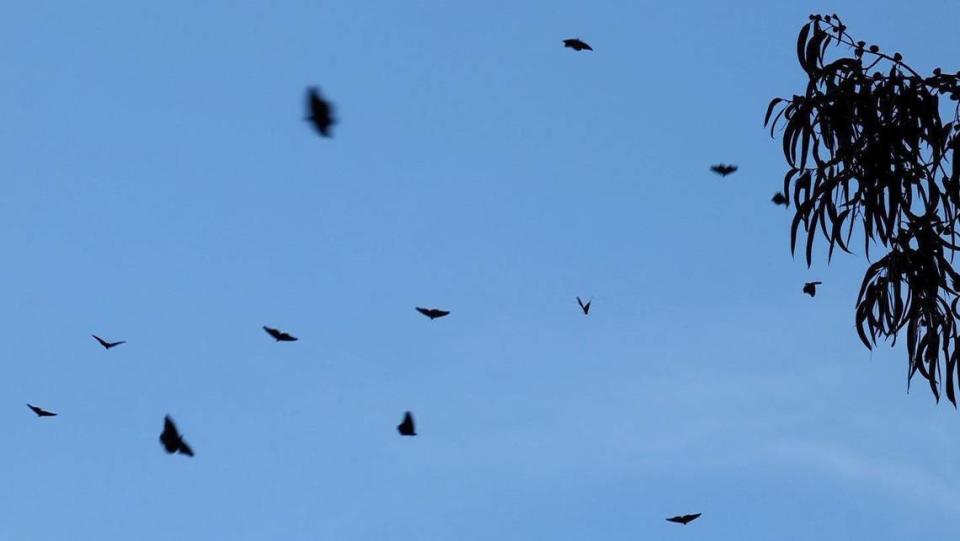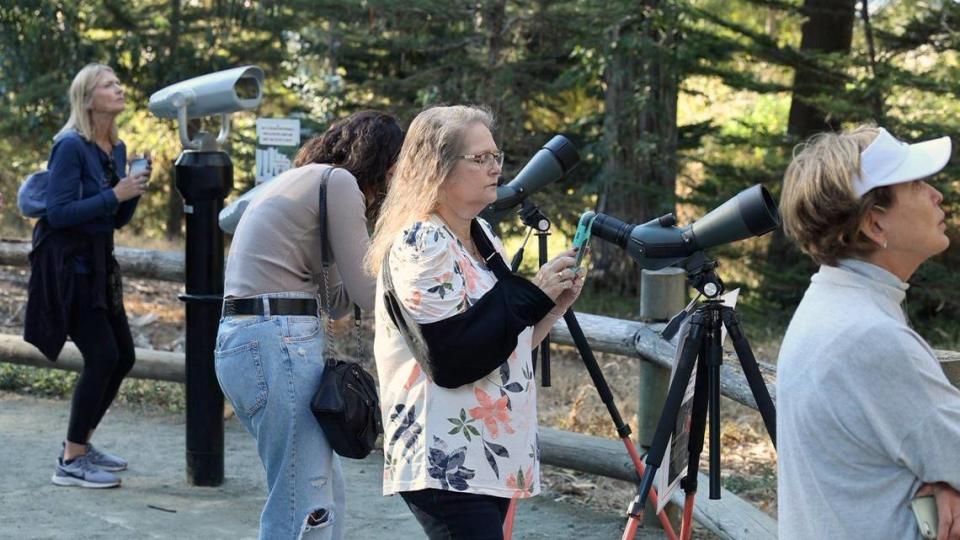They’re back! Thousands of monarch butterflies flutter into SLO County grove
‘Tis the season for the branches at the Pismo State Beach monarch butterfly grove to become heavy with fluttering orange-and-black butterflies.
Thousands of monarch butterflies have so far been counted by California State Parks staff in the coastal grove along Highway 1 in San Luis Obispo County.
As of Nov. 2, the grove had around 8,114 monarch butterflies, according to State Parks interpreter Danielle Bronson.
That’s up from roughly 2,000 counted two weeks prior, Bronson noted. State Parks plans to conduct counts of the monarchs every two weeks.
The counts coincide with the Xerces Society for Invertebrate Conservation annual Thanksgiving count of overwintering butterflies throughout California.
The annual count helps keep track of how many monarch butterflies are migrating into the state to overwinter in groves. Monarchs overwinter — or mostly stay in one location for the winter — to conserve energy during the colder months before they depart and disperse throughout the nation to breed.

Early monarch butterfly counts at Pismo Beach grove lower than previous years
The roughly 8,000 butterflies counted at the beginning of this month at the Pismo Beach grove is lower than counted in the previous two years at around the same time.
Last year, more than 24,000 were counted by Nov. 3, according to State Parks. In 2021, about 22,400 were counted on Nov. 10.
The low early counts this year could be due to a number of factors.
“Maybe it’s because of the big winter storms,” said Isis Howard, an endangered species conservation biologist with the Xerces Society.
The nonprofit organization typically counts butterflies around the Thanksgiving and New Year holidays. The first count gives a good idea of how many are arriving in overwintering groves, while the latter shows how many stayed at the groves through early January.
This year, the Xerces Society saw the number of overwintering butterflies in California groves drop by 58% — from 335,379 to about 116,000 butterflies. That’s a huge decrease compared to the more recent typical drop of about 35% to 49%, according to the organization.
Howard also noted she’s heard anecdotally the butterflies were breeding later than normal.
“Maybe we’ll see a delayed wave of the butterflies coming into the groves,” she said.
The butterflies often arrive in droves. For example, in 2021, about 7,200 butterflies were counted in the Pismo Beach grove on Oct. 20. By Nov. 10, 2021. about 22,400 were counted, according to State Parks.
Monarch butterflies long vulnerable to extinction
Seeing any number of butterflies this year is exciting, Howard said.
Monarch butterflies have teetered on the edge of extinction for years as the important pollinator struggles to survive in the face of climate change and shrinking habitat.
In 1997, researchers counted more than 1.2 million overwintering monarch butterflies in California. By 1998, that number had dropped by half, and again fell by nearly another 50% in 1999, according to Xerces Society data.
In the early 2010s, the overwintering monarch counts hovered at around 140,000 to nearly 300,000. But in 2018, the population plummeted to just about 28,000 monarchs.
The monarch butterfly overwintering population hit an all-time low in 2020, with fewer than 2,000 counted across all of California.

That was followed by two years of better numbers — but certainly not high enough to ease scientist worries that the species was on the brink of extinction.
“Small populations are particularly vulnerable to being snuffed out by extreme weather, so we are lucky these storms occurred in a relatively good year,” said Emma Pelton, a conservation biologist at the Xerces Society, after the New Year’s count in January.
In July 2022, the accredited International Union for Conservation of Nature classified the monarch butterfly as endangered globally.
The species are also designated as imperiled and vulnerable by the California Department of Fish and Wildlife. Therefore, they cannot be handled, removed from the wild or otherwise taken for scientific or propagation purposes, according to the agency.
“It’s really exciting so far to see we’re getting another year of good monarch numbers,” Howard said of the recent counts, “even if it’s not quite as high as last year so far.”


